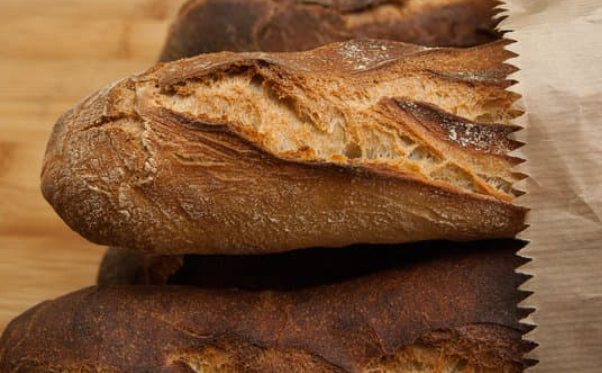How to Tell if a Baguette Is Bad? It’s Easy!

What To Know
- A slimy or sticky texture on the crust or interior of the baguette indicates bacterial contamination.
- Keep them in a bread box or a loosely closed paper bag to prevent them from drying out.
- Cut the baguette into cubes and toast them in the oven with olive oil and herbs for a crispy topping for salads or soups.
Baguettes, the iconic French bread with a crispy crust and airy interior, are a staple in many households. However, like all baked goods, baguettes don’t last forever. Knowing how to tell if a baguette is bad can save you from consuming spoiled bread and potential foodborne illnesses. This comprehensive guide will provide you with the essential signs to look for when determining the freshness and safety of your baguette.
Signs of a Bad Baguette
1. Mold Growth:
Mold is a telltale sign of spoilage in bread. If you notice any fuzzy or discolored spots on the crust or interior of the baguette, it’s best to discard it immediately. Common mold types found on bread include white, black, green, and blue mold.
2. Unpleasant Odor:
Trust your sense of smell. If the baguette has an off-putting odor, such as a sour, musty, or vinegary smell, it’s likely gone bad. Fresh bread should have a slightly yeasty or nutty aroma.
3. Slimy or Sticky Texture:
A slimy or sticky texture on the crust or interior of the baguette indicates bacterial contamination. This can occur due to improper storage or handling. Discard the baguette if you encounter such a texture.
4. Stale or Hard Crust:
Over time, the crust of a baguette can become stale and hard. While this doesn’t necessarily mean the bread is bad, it does indicate that it’s not at its peak freshness. Stale baguettes can still be used for croutons or bread crumbs.
5. Discolored Crumb:
The crumb, or the interior of the baguette, should be a uniform light cream color. If you notice any discoloration, such as dark spots or streaks, it’s a sign that the bread is starting to spoil.
6. Loss of Freshness:
Fresh baguettes have a crisp crust and a soft, airy interior. As the bread ages, it loses its crispness and becomes denser and drier. While this doesn’t necessarily mean the bread is bad, it’s not as enjoyable to eat.
7. Expiration Date:
Most commercially produced baguettes have an expiration date printed on the packaging. While this date is not always accurate, it can serve as a general guideline for freshness. If the baguette is past its expiration date, it’s best to err on the side of caution and discard it.
How to Store Baguettes Properly
To maintain the freshness and quality of your baguettes, proper storage is essential:
- Room Temperature: Freshly baked baguettes can be stored at room temperature for up to 2 days. Keep them in a bread box or a loosely closed paper bag to prevent them from drying out.
- Refrigeration: For longer storage, baguettes can be refrigerated for up to 5 days. Wrap them tightly in plastic wrap or place them in an airtight container to prevent moisture loss.
- Freezing: Baguettes can be frozen for up to 3 months. Wrap them tightly in plastic wrap or place them in an airtight freezer bag before freezing. When ready to use, thaw the baguette overnight in the refrigerator or at room temperature for several hours.
Tips for Using Stale Baguettes
If you find yourself with a stale baguette, don’t despair! There are several ways to use it:
- Croutons: Cut the baguette into cubes and toast them in the oven with olive oil and herbs for a crispy topping for salads or soups.
- Breadcrumbs: Process stale baguette slices in a food processor until they form fine crumbs. Use them as a coating for fried foods or as a topping for casseroles and gratins.
- French Toast: Stale baguettes make excellent French toast. Soak the slices in a mixture of eggs, milk, and spices, then fry them in butter until golden brown.
- Panzanella Salad: This classic Italian salad combines stale bread cubes with fresh tomatoes, cucumbers, onions, and basil. It’s a refreshing and flavorful way to use up old bread.
Wrapping Up
Knowing how to tell if a baguette is bad is crucial for food safety and quality. By paying attention to signs like mold growth, unpleasant odor, and changes in texture and appearance, you can avoid consuming spoiled bread. Proper storage techniques can extend the shelf life of baguettes, while creative uses for stale baguettes can prevent waste. Remember, when in doubt, it’s always better to discard a baguette than risk consuming spoiled food.
Frequently Asked Questions
1. Q: How long does a baguette typically last?
A: Freshly baked baguettes can last for up to 2 days at room temperature, 5 days in the refrigerator, and 3 months in the freezer.
2. Q: Can I eat a baguette that has mold on it?
A: No, you should discard any baguette that has mold growth. Mold can produce harmful toxins that can cause foodborne illnesses.
3. Q: What does a bad baguette smell like?
A: A bad baguette may have a sour, musty, or vinegary odor. Fresh bread should have a slightly yeasty or nutty aroma.
4. Q: What should I do with a stale baguette?
A: There are several ways to use a stale baguette, such as making croutons, breadcrumbs, French toast, or panzanella salad.





